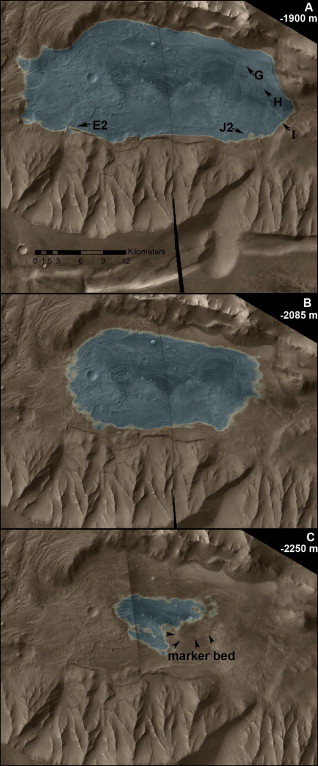
Post by Simon Goring, Research Assistant at the University of Wisconsin, Madison
Originally posted on OpenQuaternary Discussions.
For a curious person, one of the great benefits of being a Quaternary researcher is the breadth of research that is relevant to your own research questions. The recent publication of fifty key questions in paleoecology (Seddon et al., 2014) reflects this breadth, spanning a broad range questions that reflect human needs, biogeophysical processes, ecological processes and a broad range of other issues. The editorial board of Open Quaternary also reflects this incredible disciplinary breadth. To me it is clear that the Quaternary sciences is an amalgam of multiple disciplines, and, at the same time, a broadly interdisciplinary pursuit. To be successful one must maintain deep disciplinary knowledge in a core topic, as well as disciplinary breadth across topics such as ecology, anthropology, geology (and specifically geochronology), and you need a good grounding in statistics and climatology.
One of the things that is not always quite as apparent is the breadth of research affected by the Quaternary sciences. My first exposure to the utility of paleoecology for understanding interplanetary dynamics came as the result of a paper we published two years ago. In 2012, my co-authors and I developed a regional scale estimate of sediment deposition times in lakes across eastern North America for the Holocene (Goring et al, 2012). We did this because we were looking toward re-building age models for all cores in eastern North America and wanted to use reliable priors for Bacon (Blaauw and Christen, 2011). Our priors wound up becoming the default in Bacon, which is great, but the results have also helped inform the lacustrine history of the red planet, Mars.
Williams and Weitz (2014) were examining the Melas Basin, a feature of the Martian surface that appears to show evidence of lacustrine activity at some time in the past. Given a set of lacustrine features and channel beds in the basin, they began the process of trying to reconstruct lacustrine activity on the surface of Mars. It seems clear that if our own understanding of geophysical processes during the Quaternary is based on Whewell and Lyell’s concept of Uniformitarianism, that uniformity of process should not be limited to earth.
While we might assume uniformity, there are limits to how much modern or paleo terrestrial analysis can be applied to the Martian surface. Although the basin age is dated roughly using meteor strikes, the dating of lacustrine establishment and termination are much more difficult. For one, Holocene models rely on 14C dates. While it may be possible to obtain some form of geochronological information from the Martian surface, at some point it likely requires dating techniques we don’t have on hand. However, researchers can develop experimental procedures to test the possibility of using other dating techniques, and it seems like development of these techniques is already underway with K-Ar dating (Hurowitz et al., 2012, PDF).
Another limitation of using Quaternary analysis is that our Holocene estimates rely on the assumption that there is near-modern vegetation cover, that sediment transport and flow rates are similar to modern and the distribution and types of sediment are similar to modern. Even in this assumption we know there are exceptions. Sediments deposited immediately following deglaciation are often very fine grained, we often see strong increases in organic content during the Holocene, and the presence of a major inflection point in deposition rates is a persistent feature of the near-modern era.
Regardless, to understand how long a lake was present in the Melas Basin there are few options but to look at earth systems. The Williams and Weitz paper (2014) looked at both deltaic sediments and lake sediments in the basin. Williams and Weitz (2014) estimate lacustrine activity using sedimentation rates from large deltas in the United States and Russia and our sedimentation rates for lacustrine environments. Interestingly, the deltaic sedimentation and lacustrine sedimentation rates seem off by orders of magnitude. In Goring et al. (2012) we show a mean sedimentation rate of approximately 20yr/cm, meaning the lacustrine environments of the Melas Basin might have persisted for almost 90,000 years, while sedimentation rates from the deltas produce estimates of between 1,000 and 4,000 years.
In a Holocene or Quaternary context, orders of magnitude between 1,000 and 100,000 seem incredibly broad. But, when we consider that we are examining the surface of another planet, and that the lake formation dates to the Hesperian period almost 3 billion years ago, the temporal certainty that Quaternary science can provide for interplanetary research is in fact astounding.
References Cited:
Blaauw, M, & Christen, JA (2011). Flexible paleoclimate age-depth models using an autoregressive gamma process. Bayesian Analysis, 6(3), 457-474.
Hurowitz, JA, et al. (2012). A New Approach to In-Situ K-Ar Geochronology. LPI Contributions, 1683, 1146.
Goring, S, et al. (2012). Deposition times in the northeastern United States during the Holocene: establishing valid priors for Bayesian age models.Quaternary Science Reviews,48, 54-60.
Seddon, AW, et al. (2014). Looking forward through the past: identification of 50 priority research questions in palaeoecology. Journal of Ecology, 102(1), 256-267.

